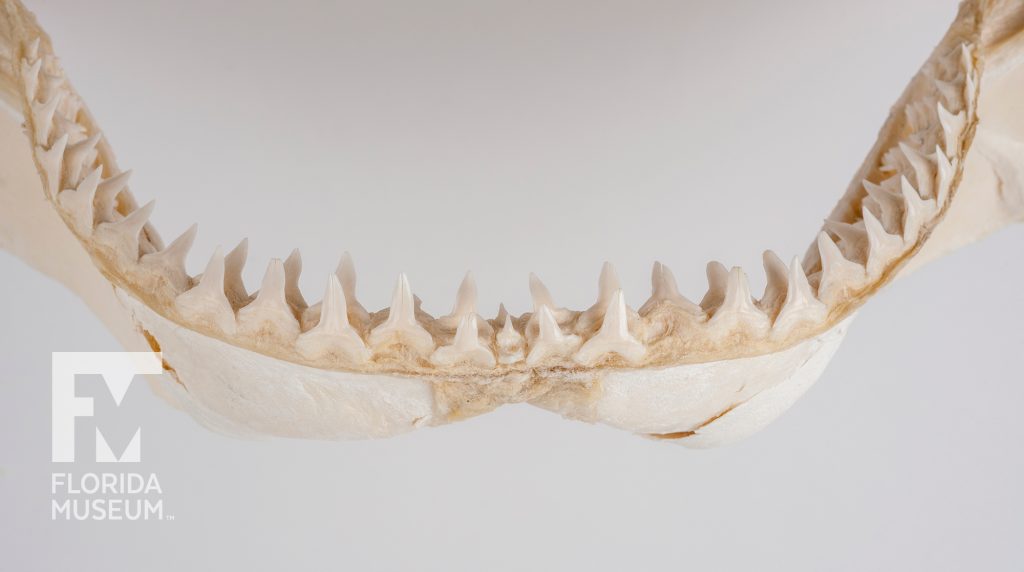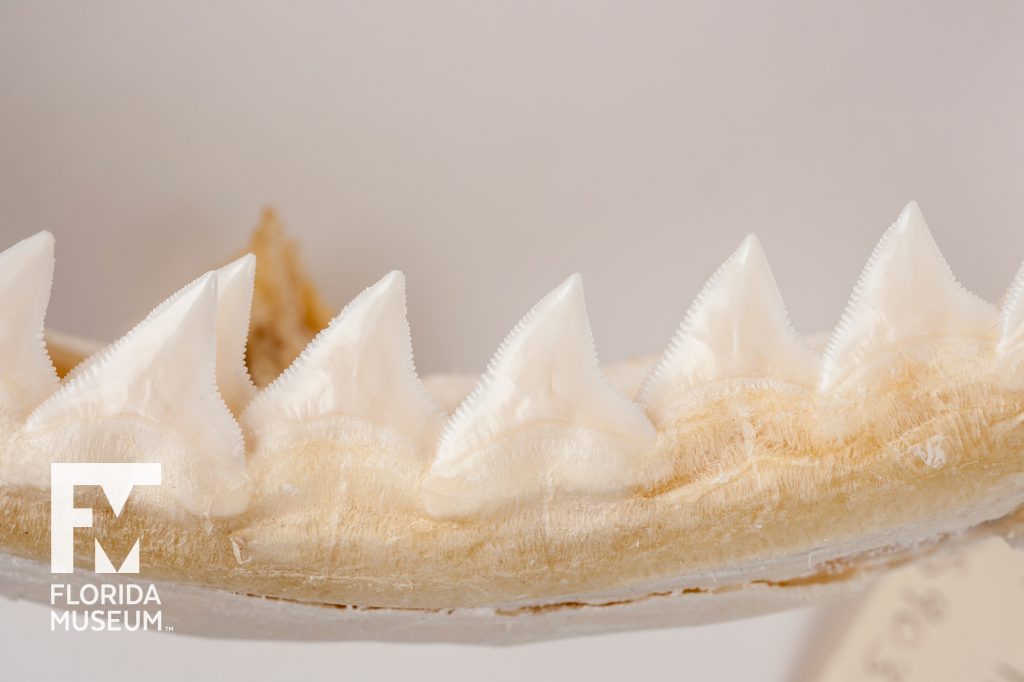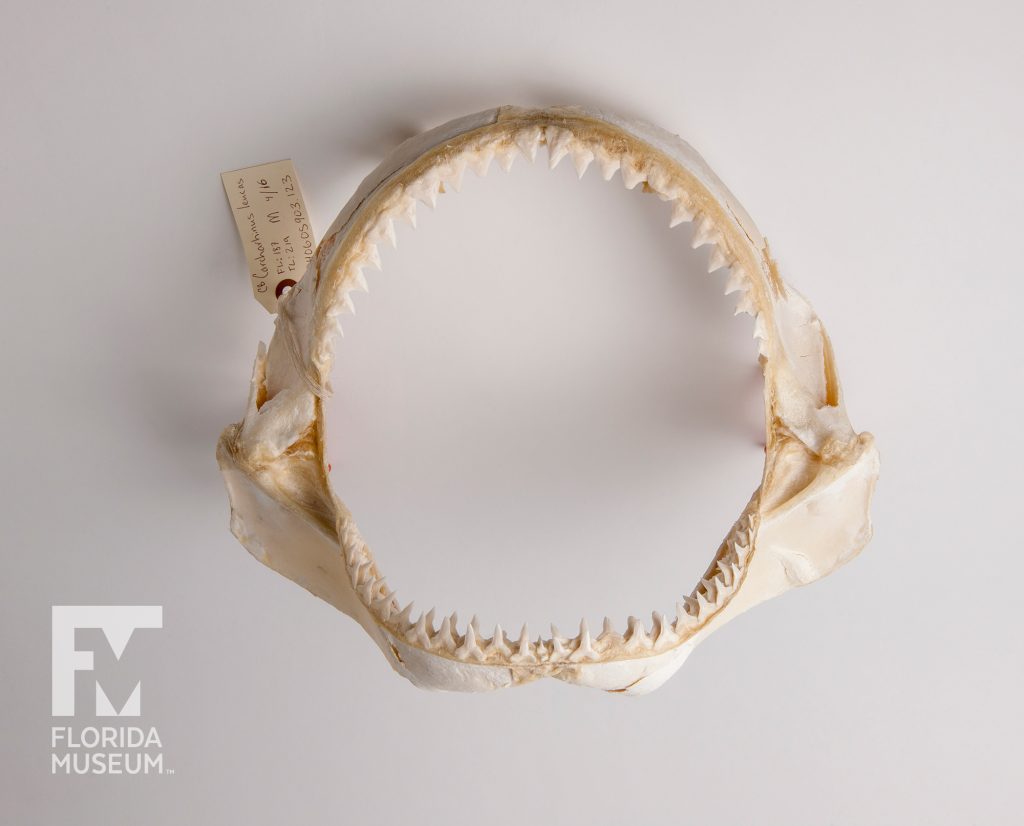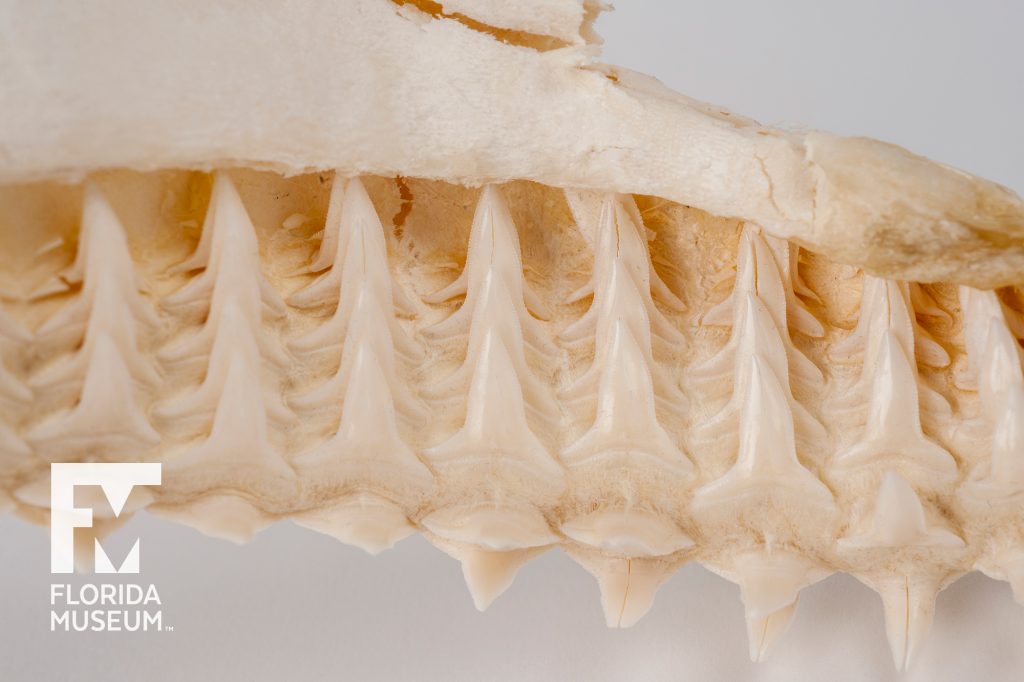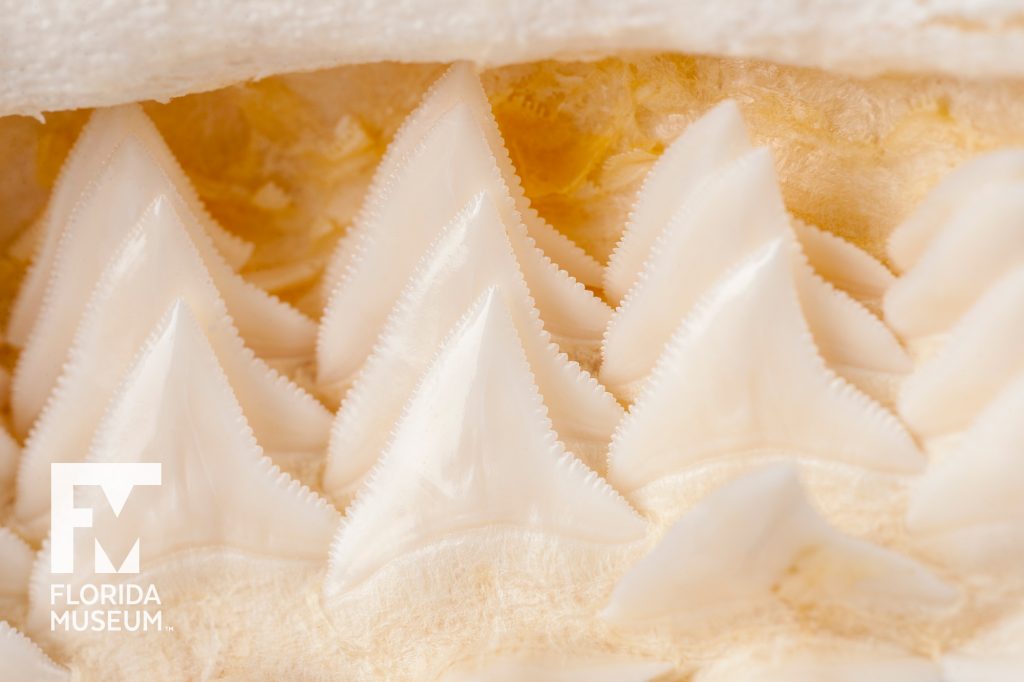On average, sharks are responsible for six human fatalities per year, while humans annually kill tens of millions of sharks in fisheries. This jaw came from a commercial fishery driven by high demand for shark fins in overseas markets.
Summary
Bull Shark jaw (Carcharhinus leucas)
From the Southern Atlantic, Apr. 2006
Collection
Story
The Bull Shark is one of the big three that we’re concerned about in relation to shark attacks on humans, along with the White Shark and the Tiger Sharks. These are the animals that produce the largest and most dangerous incidents involving humans. Unlike the other two however, the Bull Shark is an animal that doesn’t live just in the marine world but in fact enjoys being in brackish waters and even ascends into freshwater. This particular species has been taken inland as far upstream as Illinois in the Mississippi River, just as an example.
A worldwide species, it comes in contact then with humans readily in estuaries and river mouths as well as in the sea. It’s among the most aggressive of sharks – once it begins an attack it generally stays with its attack and continues on and on – and hence the name Bull Shark that was given to it. Pound for pound this is the shark that I would be most concerned about if I see it in the sea. White Sharks and Tiger Sharks, both of which get much bigger, are not as aggressive as the Bull Shark and therefore I wouldn’t be quite as concerned with them as others.
All in all, shark attack as a phenomenon is an uncommon situation with on average about six people dying per year worldwide in the sea. So, if you think about it, billions of hours being spent in the sea by humans every year, only six of us don’t come back out. And of those six, the bulls are probably responsible for about one third of those deaths.
George Burgess
Director, Florida Program for Shark Research*
Florida Museum of Natural History
Additional Information
- Read: How a century of fear turned deadly for sharks
- Species profile: Bull Shark (Carcharhinus leucas)
- How to Avoid Shark Attacks
- International Shark Attack File
- Florida Program for Shark Research
Exhibit
On display Sept. 23, 2017-Jan. 7, 2018, Rare, Beautiful & Fascinating: 100 Years @FloridaMuseum celebrated the Museum’s rich history. Each Museum collection was asked to contribute its most interesting items and share the stories that make them special. Though the physical exhibit is closed, this companion website remains online, providing an opportunity to experience the Florida Museum’s most treasured specimens.
Exhibit Area: Objects Tell Stories
Theme: Human Impact
 Want to see more? Explore more than 300 breathtaking color photos of plants, animals, fossils and cultural heritage materials from the Florida Museum of Natural History’s collections in the award-winning book All Things Beautiful available from the University Press of Florida.
Want to see more? Explore more than 300 breathtaking color photos of plants, animals, fossils and cultural heritage materials from the Florida Museum of Natural History’s collections in the award-winning book All Things Beautiful available from the University Press of Florida.
*This title was accurate at the time the exhibit was on display in 2017. Please visit the program website to verify current staff and student information.
